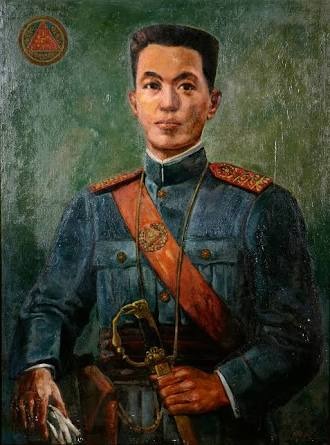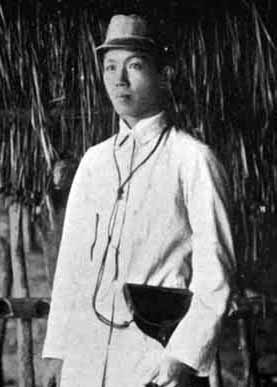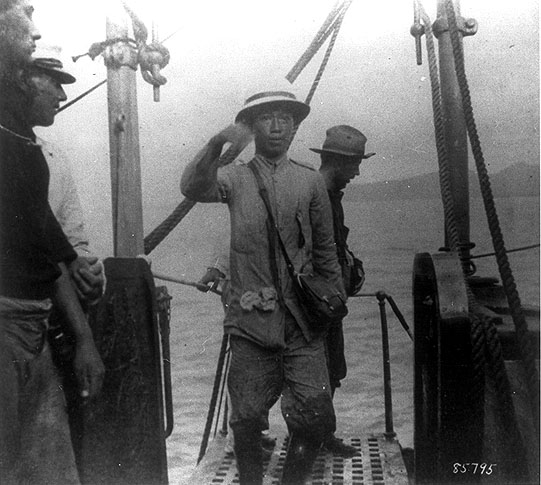Revered as a symbol of democracy and freedom, Emilio Aguinaldo is a Filipino military leader and politician who played a pivotal role in liberating the Philippines. After fighting with the Spaniards, who colonized the country for over three centuries, he became the Philippines’ first president. He then led the nation in another war, this time with the American occupiers. In this article, let’s know more about Emilio Aguinaldo and his legacy in the Filipinos’ road to independence.
Early Life
Emilio Aguinaldo y Famy was born on March 22, 1869 in Cavite, Philippines. He was the seventh of eight children from parents of Tagalog and Chinese descent. His father, Carlos Aguinaldo y Jamir, served as the gobernadorcillo (town mayor), but died when Aguinaldo was only nine years old. Her mother, Trinidad Famy y Valero, widowed, had to send Aguinaldo to Manila to attend a public school.
Aguinaldo took secondary education at Colegio de San Juan de Letran, but a cholera outbreak cut his studies short, forcing him to go back to his hometown, Kawit, Cavite. He stayed at home, helping his mother with their agricultural lands.
During his stay in Kawit, Aguinaldo developed an imminent consciousness about his countrymen’s ire of Spanish colonialism. In 1895, Aguinaldo, aged 25, took his first step into politics and became Cavite’s municipal governor-captain. In the same year, he joined the Masons under the codename “Colon.”, becoming a part of the Pilar Lodge in Imus, Cavite.
The Philippine Revolution
Longing for independence, Aguinaldo joined the Katipunan, a secret revolutionary organization led by Andres Bonifacio, his co-member in the Masons, and another anti-colonial leader. The Katipunan’s vision was to end the Spanish rule in the county, using armed force when needed. Though other Katipunan members succumbed to Spanish rule, Aguinaldo and his troops aced out their opposing forces in intensely fought battles.
Yet, despite fighting for the same cause, Aguinaldo and Bonifacio came into conflict, dividing Katipunan into two factions: Magdiwand and Magdalo. In March 1897, both parties met in the Tejeros Convention for an election, where Aguinaldo won as President.
Allegations of fraud emerged, and Bonifacio repudiated the results, refusing to acknowledge Aguinaldo’s government. As such, the former was arrested in May 1897. He was charged with treason and sedition and was executed the same month under the order of Aguinaldo. With Bonifacio’s demise, Aguinaldo became the heart of the Philippine Revolution.
Integral disagreements after the event enfeebled the movement. In June 1897, Aguinaldo and his troops were no longer able to outfight the Spanish forces. The latter retook Cavite, while Aguinaldo had to regroup in Biak-na-Bato in Bulacan Province. Failing to withstand the growing pressure, he and his rebels surrendered to the Spaniards in December 1897 under the Truce of Biak-na-Bato. In exchange for considerable financial reward, amnesty, and promise of liberal reforms, Aguinaldo agreed to leave the Philippines and be exiled in Hong Kong.
However, both sides didn’t conform to the pact. No reforms were made, while the rebels never really surrendered, even using the financial reward to obtain more arms for the revolution. Meanwhile, Aguinaldo also made agreements with the Americans, promising to aid them in the Spanish-American War.
On May 19, 1898, Aguinaldo came back to the Philippines, signaling the renewal of the Filipino resistance to Spain. On June 12, the same year, he proclaimed the Filipinos’ independence from Spanish rule and announced the creation of the provisional republic. The Malolos Congress drafted a constitution in September. In January 1899, Aguinaldo took oath as the first president of the Philippine Republic.
Filipino-American War
The United States quickly won the Spanish-American War. Spain ceded the Philippines, and its other colonial possessions, Cuba, Guam, and Puerto Rico, on December 10, 1898, under the Treaty of Paris. The United States didn’t recognize Aguinaldo’s government, and the relationship between the Filipinos and Americans grew worse.
On February 4, 1899, the conflict formally exploded into action, commencing the Filipino-American War. While they fought bravely, Aguinaldo and his troops were defeated by the Americans. The Filipino revolutionaries fled northward and resorted to guerilla warfare. Though it was far more effective than direct combat, the odds were still on the American side due to better weaponry and command.
After three long years of war with the Americans, Aguinaldo was captured on March 23, 1901, in Palanan, Isabela. He then swore allegiance and declared peace to the U.S. on April 19, 1901. While there were still organized opposition in certain areas, all steadily dwindled, and the majority of the resisting forces came to an end by the spring of 1902.
Aguinaldo was granted a pension from the U.S. government when he signed the agreement and retired to private life as a farmer. He ran for the presidency in 1935 but decisively lost to Manuel L. Quezon. In 1946, the United States granted the Philippines its complete sovereignty.
Four years later, he was appointed as a Council of State advisor under Pres. Elpidio Quirino’s term. Aguinaldo only served one term and then focused on veterans’ affairs and rights. He also used his influence to promote democracy and nationalism. At the age of 94, Aguinaldo died on February 6, 1964, due to coronary thrombosis, but surely left a lasting legacy in Philippine independence.



